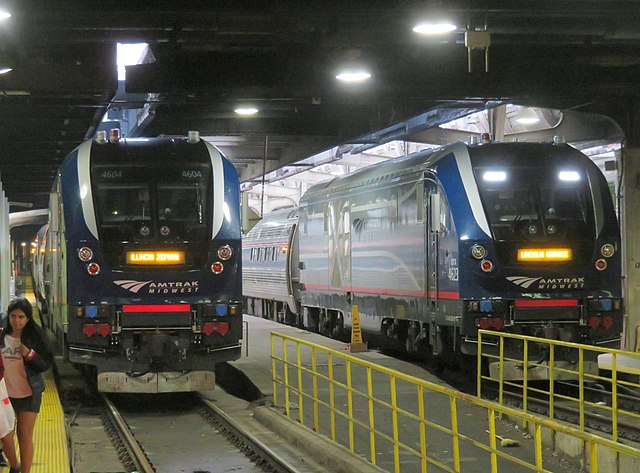Nearly two months ago, the Antiplanner reported that, after spending $2 billion, the Chicago-St. Louis high-speed rail would be speeded up from an average speed of 55.7 miles per hour (for the fastest train in the corridor) to 59.6 miles per hour. These higher average speeds were to go into effect on June 26 and would supposedly reduce travel times between Chicago and St. Louis by half an hour from what they had been before spending the money.
I am reminded of this by an article in the paper edition of Trains magazine, which reported that trains were indeed speeded up on June 26. However it turns out the gains are even worse than I reported. Yes, one of the five trains in the corridor will go an average of 59.6 miles per hour (but the others will go slower). But the $2 billion spent in the corridor didn’t come close to fulfilling the promises made when the federal government handed out the funds in 2010.
As the Antiplanner reported in 2010, when the state of Illinois applied for the federal funds, it promised that it would increase train speeds not to 59.6 mph but to 68 mph. Moreover, it promised to increase frequencies from five to eight trains a day. The money has been spent, but neither of those promises have been kept, as Amtrak is still running only five trains a day.
Even 59.6 miles per hour isn’t really as big a speed up as claimed. The Antiplanner has a 1976 Amtrak timetable, at which time Amtrak’s fastest Chicago-St. Louis train took under 5 hours, for an average speed of 57.2 mph. Amtrak’s inability to keep the track maintained forced the state-owned company to reduce speeds of the fastest train to 53.3 mph. The $2 billion increased the speed of the fastest train to 55.7 mph in 2021 and then to 59.6 in 2023.
In other words, most of the $2 billion was more of a fix-crumbling-infrastructure project disguised as a high-speed rail project. Will Midwest residents ever see the promised eight trains a day? I suspect, given low post-pandemic ridership, it won’t happen for awhile if ever. But never forget that it took $2 billion and nearly two decades of planning and construction to increase train speeds by a whopping 4 percent. When Amtrak publishes its July ridership numbers, I’ll check to see if there is any evidence that this increase led to any new riders.









Me thinks those chuckle heads fail understand,
High Speed rail needs high speed rail track
https://www.researchgate.net/publication/352560503/figure/fig1/AS:1037187214749697@1624296110121/Structure-of-a-slab-ballastless-track-a-China-Railway-Track-System-CRTS-I-7-b.png
Requires a painstakingly dedicated piece of well maintained infrastructure. The President known as Amtrak-Joe bequeathed Amtrak with $66 billion over 5 years in 2022.
Even if Amtrak were to double it’s overall ridership in it’s 5 years; $66 billion divided by 330 million trips would amount to a $200/trip subsidy.
In any case, Amtrak spent virtually NONE on fixing hudson tunnels, North East Corridor.
The grand scale fleecing of taxpayers by state and local transit officials will continue until there are serious consequences for doing so.
The transit industry has been proving for decades that there is no downside to underestimating costs, over-promising results and otherwise lying.
The blame rests clearly on indifferent USDOT officials who knowingly look the other way, and who also don’t suffer any consequences for doing so.
Which will attract more new riders?
$2billion to go 4% faster
OR
$2 million on free champaign?